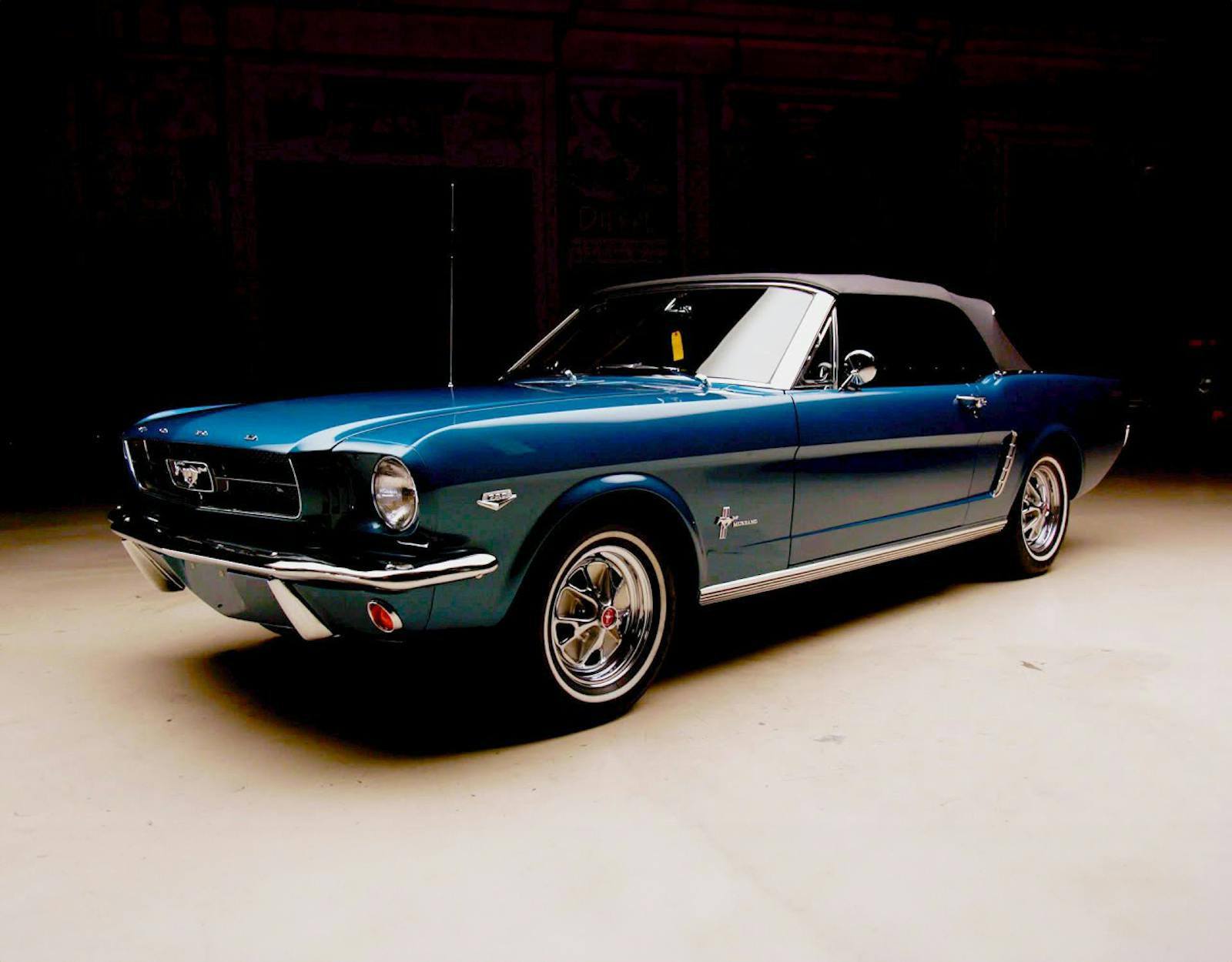NFT: This virtual Bronco sale epitomizes the weirdness of 2021

In 2021, everything about the classic car market seemed to speed up. Seven-figure sales at auction, once the sort of thing we witnessed in a few select venues throughout the year, can now happen over computer screens on a random Friday.
And then there was the appreciation. Nearly all the segments we track were up and many were up a lot: Hagerty’s Muscle Car index hit an all-time high; the top 10 Japanese vehicles we track in the Price Guide appreciated between 22 and 52 percent year-over-year; many new enthusiast cars immediately brought more than their sticker price; and many so-called analog supercars, such as the Ferrari F40, Porsche Carrera GT, and the McLaren F1 had banner years. More vehicles gained value in the latest release of the Hagerty Price Guide—56.2 percent—than at any point since 2014.
All to say, the data wonks at Hagerty Insider had plenty of vehicles to choose from when considering our Sale of the Year. It might seem rather odd then, that we settled on something that isn't a vehicle at all. In fact, it's something that many of us can't even describe (although we're about to try). At Las Vegas, in June, Barrett-Jackson sold a non-fungible token (hereafter “NFT”) of a new two-door Ford Bronco VIN 001 for $22,000. The $22,000 did not buy keys to a new truck. Instead, it was for the non-fungible token of the digital commemoration of the sale of that truck. At Scottsdale in March, Barrett-Jackson had sold the actual truck as a charity lot for $1,075,000. March is also, incidentally, the month in which Christie's sold a 443,902,761-pixel digital collage, “Everydays: The First 5,000 Days,” by the artist known as Beeple, for $69,346,250.
Get comfortable: We're about to tell you what NFTs are
What did the buyer of “Everydays” or the B-J NFT actually get? The facile answer is “nothing,” yet in the context of “nothing”, the copyrights for J.K. Rowling’s Harry Potter books are similarly ephemeral. So, at the end of the day, is the very concept of "value" when ascribed to anything that can't be eaten, lived in, driven, smoked, etc. Somewhere in the dark reaches of prehistory, people had to agree that gold, a soft metal with little use in tools or weapons, was precious. We've also become accustomed to ascribing value to things few of us actually touch or understand. How many people can explain how fiat money works, or precisely what happens when you swipe your credit card at the grocery store?
Still, the concept of NFT is particularly difficult to grasp. We're going to do our best to explore it now. For starters, it’s key to understand that an NFT is not a “thing” nor is it even based on a thing. Rather, it is a unique sequence of records in a digital trail known as a blockchain. An NFT is somewhat like the quantum physicist’s “event”: “[T]he instantaneous physical situation or occurrence associated with a point in spacetime,” per the quantum physicists at Wikipedia.
Other cryptocurrencies, including Bitcoin and Ethereum (the platform that supports NFTs) use fundamentally similar technology. Where NFTs differ is spelled out right in their name—they are non-fungible. Whereas coins—digital or metal—are intended to be functionally the same—i.e., fungible—each NFT is, thanks to its digital trail, distinct and traceable to its creation and through its history.
However—and here's where things get really confusing—the non-fungible nature of an NFT does not come from the image associated with it. You can right click and copy the picture of VIN 001 Bronco or Beeple's collage. Rather, the distinctiveness comes from the digital trail.
There are issues with NFTs beyond their, ahem, cryptic nature. For one, they're not theft-proof. An NFT's digital trail is, by definition, open and accessible, only the identities of the owners of the digital “wallets” where the NFTs reside are hidden behind long, inscrutable passwords. The underlying “event” (in the quantum sense) to which the NFT ledger entries apply may be found on the internet. And if the financial allure is great enough, even the generally good misappropriation protection of the blockchain where the cryptocurrency Ethereum is recorded, where most NFTs are maintained, is not invulnerable.
If a nefarious hacker were to shut down the blockchain network(s) documenting NFTs—and hackers have successfully stolen millions of Bitcoins and no small amount of Ether—the whole ethereal network of ownership would collapse in an instant.
Then there is the ever-present hazard of forgetting or misplacing the multi-character key for accessing the digital wallet where one's stash of NFTs is stored. Lose the key and the wallet contents become in the most basic sense “ethereal”—no longer tradable.
Of course, the risks of loss or theft is hardly novel: Ask anyone who’s been pickpocketed. A challenge more particular to NFTs, at least as far as currencies are concerned, is the energy they require. Creating and maintaining the blockchain that underpins NFTs and many cryptocurrencies requires a vast network of computing nodes. the energy use and resulting carbon footprint is staggering. Ethereum itself calculates that its current technology has about the same annual carbon footprint as Switzerland, a country of some 8.6 million people. Put it another way: If your TR3 gets 20 mpg (33.7 kwh equivalent) on the highway it could be driven 5.3 miles per Ethereum blockchain transaction. In 2021, there were, per Statista, more than a million of these transactions a day.
Newer NFT blockchains like Tezos, Flow, or Solana, rely on a “proof of stake” process which uses much less energy. Ethereum in 2022 will transition to “proof of stake”.
So, why do people buy them?
Some of the “digital art”, like “Cryptopunks” or “Cool Cats NFT”, traded on NFT exchanges like OpenSea are childish, even large pixel images that would have been ridiculed as crude even back in the Space Invaders era. Other stuff is game drivel, like weapons and armor for online gaming platforms.
But let’s not forget that beople, oops, I mean “people”, are paying mega-money to own non-fungible tokens. They were prominent in this fall’s New York contemporary art auctions where another Beeple creation, “HUMAN ONE”, sold for $29 million, a physical object with a “dynamic NFT”—as described by Christie’s here:
Beeple (b. 1981), HUMAN ONE, 2021. Kinetic video sculpture—four video screens (16k resolution), polished aluminum metal, mahogany wood frame, dual media servers; endless video with corresponding dynamic NFT.
The “dynamic NFT” attribute of HUMAN ONE is that Beeple will continue to change it. The figure representation, background, motion and other observable attributes may change with Beeple’s whim. Could the figure be changed to look like Chewbacca? Could the background environment evolve to jungle, the moon or desert? The HUMAN ONE that was bought at Christie’s may not be the HUMAN ONE that its owner observes in the future, or even gets when the box is delivered.
Schrödinger’s Cat comes to mind. [Apologies if quantum theory has been taken too far.]
At this point the owner of the NFT marking the sale of a Ford Bronco at Barrett-Jackson has unqualified and documented ownership of only a blockchain record of certain digital bytes—which may not be exclusive—and a one-time admission for two to a B-J Muscle Lounge in 2022. B-J's NFT provider, motoclub.io, has yet to launch a marketplace, so we can't comment on secondary market values.
Hard to understand and somewhat unsettling—just like 2021
NFTs are novel, bright, shiny objects like a dangling mobile over a baby’s crib. They engender fascination and invite interaction. They inspire dreams of great and almost instant wealth, of value that their advocates believe the uninitiated, or merely the unimaginative, cannot appreciate.
Like the variegated tulips of seventeenth century Holland, or owning stock of forlorn and profitless GameStop, ownership of NFTs is admission to an exclusive club of self-selected insiders, a club with its own frequently impenetrable jargon, secret greetings, and even exclusive meeting places on the internet.
Assessing an NFT’s value is nearly as ephemeral as the NFT itself. There are no guidelines, no firmly rooted comparable transactions, no database of documented transactions in similar NFTs, no experts with years of experience holding forth with informed opinions.
It is pitched in esoteric, constantly changing, terms and phrases even more obscure than the rapidly fading language of old cars: spark plug heat ranges, valve clearances, point dwell, jets, needles and venturis. The NFT system evolves even faster than the automobile did 125 years ago and, unlike the automobile that would (until the advent of the Beetle and Mini) quickly settle on the système Panhard, there is no sign NFTs will adopt a common operating system, format or structure.
There is no telling whether or in what form NFTs will endure. Nevertheless their emergence in 2021 was certainly significant. At the very least the B-J NFTs epitomize the frenzied and unsettled nature of our times.
If all this seems about as appealing as going for a ride in an autonomous driving vehicle take some heart: The $22,000 that bought the Bronco NFT at Las Vegas also put the keys to a 1977 FJ40 Land Cruiser or a 2000 Corvette Convertible in the hands of B-J Las Vegas buyers. That is real money for real vehicles—even if they didn't come with Muscle Lounge access.

